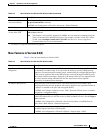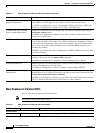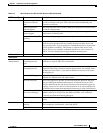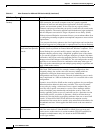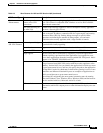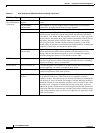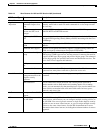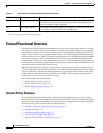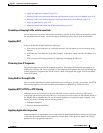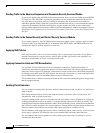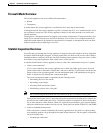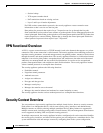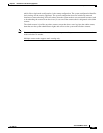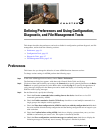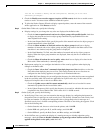
2-17
Cisco ASDM User Guide
OL-16647-01
Chapter 2 Introduction to the Security Appliance
Firewall Functional Overview
• Applying Application Inspection, page 2-17
• Sending Traffic to the Advanced Inspection and Prevention Security Services Module, page 2-18
• Sending Traffic to the Content Security and Control Security Services Module, page 2-18
• Applying QoS Policies, page 2-18
• Applying Connection Limits and TCP Normalization, page 2-18
Permitting or Denying Traffic with Access Lists
You can apply an access list to limit traffic from inside to outside, or allow traffic from outside to inside.
For transparent firewall mode, you can also apply an EtherType access list to allow non-IP traffic.
Applying NAT
Some of the benefits of NAT include the following:
• You can use private addresses on your inside networks. Private addresses are not routable on the
Internet.
• NAT hides the local addresses from other networks, so attackers cannot learn the real address of a
host.
• NAT can resolve IP routing problems by supporting overlapping IP addresses.
Protecting from IP Fragments
The security appliance provides IP fragment protection. This feature performs full reassembly of all
ICMP error messages and virtual reassembly of the remaining IP fragments that are routed through the
security appliance. Fragments that fail the security check are dropped and logged. Virtual reassembly
cannot be disabled.
Using AAA for Through Traffic
You can require authentication and/or authorization for certain types of traffic, for example, for HTTP.
The security appliance also sends accounting information to a RADIUS or TACACS+ server.
Applying HTTP, HTTPS, or FTP Filtering
Although you can use access lists to prevent outbound access to specific websites or FTP servers,
configuring and managing web usage this way is not practical because of the size and dynamic nature of
the Internet. We recommend that you use the security appliance in conjunction with a separate server
running one of the following Internet filtering products:
• Websense Enterprise
• Secure Computing SmartFilter
Applying Application Inspection
Inspection engines are required for services that embed IP addressing information in the user data packet
or that open secondary channels on dynamically assigned ports. These protocols require the security
appliance to do a deep packet inspection.



